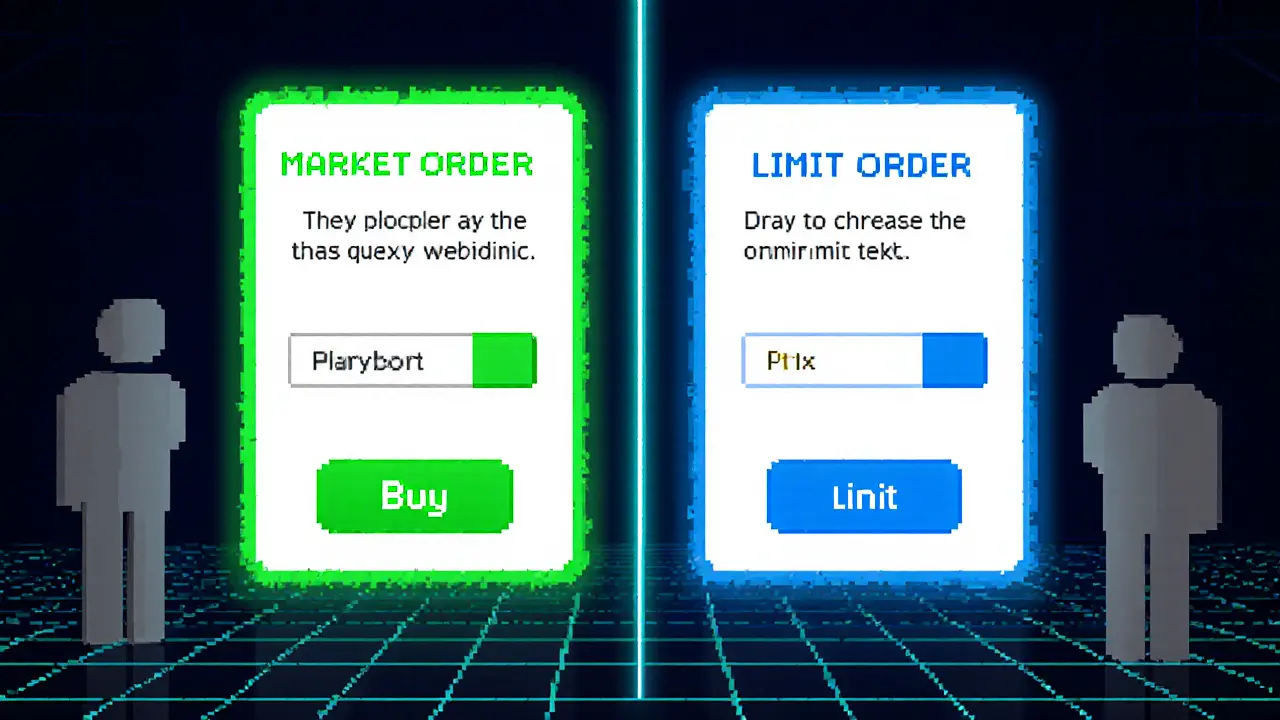Market Orders: Quick Trades on Decentralized Exchanges
When working with Market Orders, orders that execute instantly at the best available price on a trading platform. Also known as market buys or sells, they let traders jump in or out without waiting for a matching price.
These orders draw their speed from the Order Book, a live list of all open buy (bids) and sell (asks) offers that shows depth and price levels. The deeper the book, the less price slippage you’ll see when a market order sweeps through several price tiers. In other words, market orders need a healthy order book to keep execution costs low.
Many traders pair market orders with Limit Orders, instructions to buy or sell only when a specific price is reached. While limit orders give you price control, they can sit idle if the market never hits your target. Market orders, on the other hand, guarantee execution but sacrifice price certainty. Knowing when to switch between the two can save you from unwanted spikes.
Liquidity is the engine that powers both market and limit orders. On a decentralized exchange (DEX), liquidity comes from pooled assets in automated market makers (AMMs) and from users placing orders in the book. If liquidity dries up, even a small market order can move the price dramatically, a phenomenon known as price impact. Monitoring liquidity pools and depth charts helps you anticipate how much a market order will actually cost.
Another piece of the puzzle is Slippage, the difference between the expected price and the price at which the order finally fills. Slippage is inevitable with market orders, especially during volatile moments or when trading low‑volume tokens. Many DEX interfaces let you set a maximum slippage tolerance; if the real slippage exceeds that number, the trade aborts to protect you.
Trading strategies often blend these concepts. For example, a scalper might use market orders to capture rapid price moves, then set limit orders to lock in profit. A long‑term holder could wait for a dip, place a limit order, and use a small market order to top‑up the position when the market stabilizes. Understanding how market orders interact with the order book, liquidity, and slippage lets you design a plan that matches your risk appetite.
Now that you’ve got the basics of market orders, order books, limit orders, liquidity, and slippage, the articles below will dive deeper into real‑world examples, regulatory nuances, and toolkits you can use on DEX Morning. Explore the list to see how these ideas play out across different tokens, regions, and trading platforms.
Market Orders vs Limit Orders: How They Work in Order Books
Posted By Tristan Valehart On 9 Jan 2025 Comments (19)

Learn the key differences between market and limit orders, how they work in the order book, and when to use each for better trade execution.
READ MORE